From maritime origins to cultural capital, Liverpool is making its modern-day mark with an innovative variety of world-class museums, galleries and theatres, as well as a wealth of stunning architecture and a spectacular and historic UNESCO World Heritage waterfront.
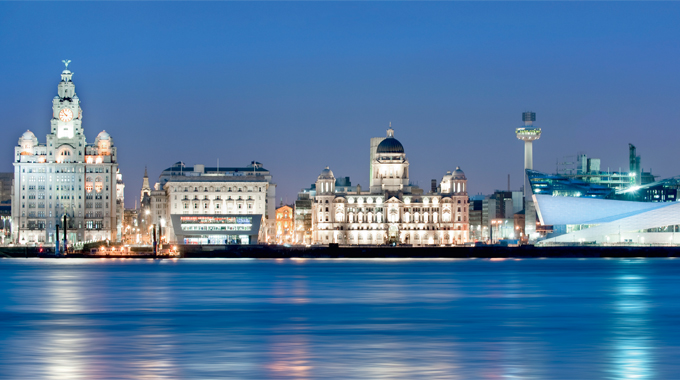
We think we know Liverpool: brash, bright, precociously self-aware, a loveable rogue of a place. But there is another side to this fascinating city that is friendly, creative and charming. Its wide streets lined with patrician architecture testify to a time of great wealth, and yet nowhere could be more down-to-earth. Its worldwide influence is so pervasive that UNESCO described the area as the supreme example of a commercial port at the time of Britain’s greatest global power. And almost every human being on the planet knows the words to at least one Beatles’ song…
And yet it wasn’t always thus. Although the city was founded as a borough in 1207 by letters of patent from King John (he of Magna Carta fame), by the middle of the 16th century the population was still only around 500. Yet by the early 19th century, more than 40 per cent of the world’s trade passed through Liverpool’s docks. This rapid expansion, buoyed by wealth (mainly from the slave trade) meant Liverpool became a bustling, cosmopolitan place, eager to embrace the new influences pouring in from all over the world.
J B Priestley said of Liverpool: “Here, emphatically, was the English seaport second only to London. The very weight of stone emphasised that fact. And even if the sun never seems to properly rise over it, I like a big city to proclaim itself a big city at once.” This commitment to the oversized was amply demonstrated by the recent Sea Odyssey weekend, where giant marionettes from French theatre company Royal de Luxe stalked Liverpool’s streets.
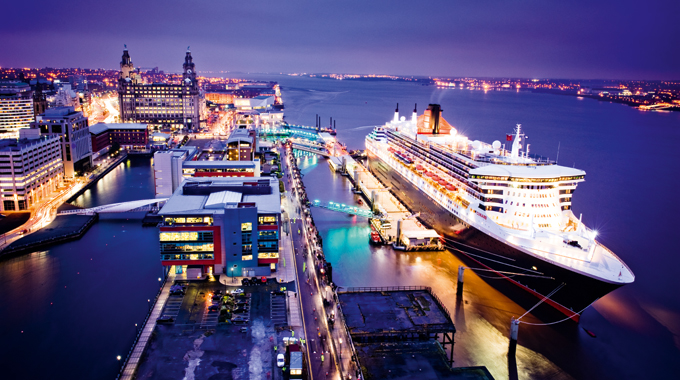
The colossal puppets acted out a simple story inspired by the city’s connection to the Titanic. The star of the show, the Little Girl Giant, embarked on a quest for news of her father, a stowaway who died on the ill-fated ship. Her search took her through Liverpool’s UNESCO World Heritage Site stretching along the waterfront from Albert Dock through the Pier Head, with its famous Three Graces, up to Stanley Dock, through the mercantile districts and classic Georgian architecture, and after stopping for a quick nap on Everton Brow, she paraded through the bustling heart of Liverpool’s shopping district, before finally sailing away down the River Mersey.
This is the kind of leftfield, so-crazy-it-works cultural event at which Liverpool excels. The Sea Odyssey beautifully illustrated the city’s rich past, maritime heritage and most importantly, the Liverpudlian ethos of joining in, welcoming visitors and showing up for a good time.
The tidal surge of the River Mersey on which the giants made their exit is the lifeblood of the city and the tang of the sea is never far away. A ferry trip is a good way to see just how important the sea is to Liverpool. From the tug boat, the Three Graces – the Liver, the Cunard and the Port of Liverpool buildings – command the Pier Head, evoking the wealth and dominion of the British Empire in its heyday. Rowdy sailors from all over the globe must have felt just a little chastened by their presence. Local historian Jonathan Schofield says: “Outside Whitehall if you want to feel – really feel – the power of the British Empire in its full pomp, then stand on the Pier Head and look inland from the river. That view is our Imperial moment.” Sailing out towards Birkenhead, one can see the Cammell Laird shipyards, busy with new naval commissions, showing that Liverpool is not just a dockland theme park but a real working city.
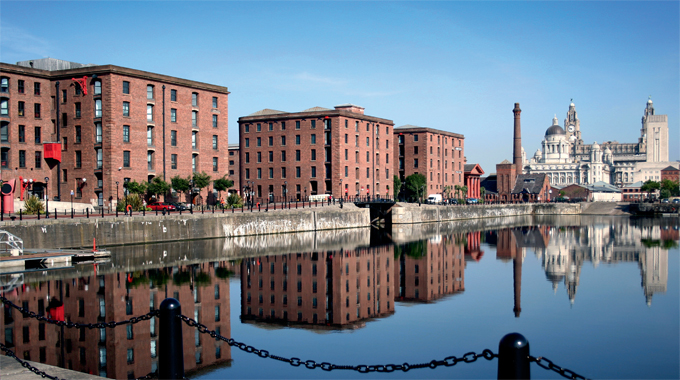
The ferry pulls into Albert Dock, which dates from the 1840s and was restored to its former glory in the 1980s. It is now the most popular free tourist attraction in the North West, and with good reason. Here you can find The Beatles Story, Merseyside Maritime Museum and the International Slavery Museum. The newest kid on this block is the Museum of Liverpool, which has surpassed expectations by recording more than a million visitors in just nine months. Dedicated to a sociological exploration of the city, it has a wealth of Liverpool’s secrets on show.
The dock is also home to Tate Liverpool, the northern cousin of the Tate Modern. Though smaller than its big-city counterpart, the play of the light on water makes the venue ideally suited for contemplating the undulations of a Bridget Riley painting or a Henry Moore sculpture. It is no slouch in putting on blockbuster exhibitions each summer either – this year’s triple bill of Monet, Turner and Twombly is bound to follow previous summers’ Picasso and Klimt exhibitions in packing the museum to the rafters.
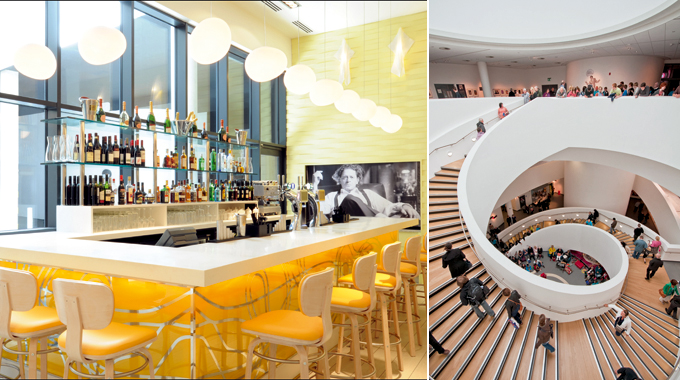
Art lovers will also want to head up to the Walker Gallery. Thanks to the city’s Victorian patriarchs, the gallery has a deservedly famous collection of Pre-Raphaelites and a healthy dash of Impressionists. Another treat is the recently opened British Art room, with a discerning selection including Paul Nash, Lucian Freud and LS Lowry. Other galleries to note include the Open Eye and The Bluecoat, both dedicated supporters of contemporary arts. Like the vast majority of Liverpool’s museums and galleries, they are all free to the public.
Liverpool’s commitment to the arts is not only seen in its galleries but also in the Liverpool Biennial, which takes place on even-numbered years. It runs from 15 September to 25 November 2012, and if previous years are anything to go by, we can expect pop-ups, giant swords, mazes made out of ribbons and buildings that turn themselves inside out.
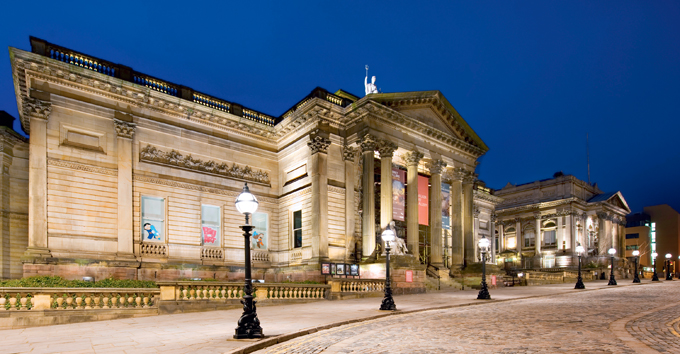
Theatre and music aren’t left behind either, with the Liverpool Philharmonic (the UK’s oldest surviving classical orchestra) and the Everyman Theatre also riding on the wave of local enthusiasm. “Liverpool excels in putting on cultural events. The enthusiastic way in which the people of the city both celebrate their history and embrace new events and experiences makes the city the perfect platform for cultural events to thrive,” says Dominic Lopes of the Everyman Theatre.
Art isn’t Liverpool’s only source of wonder. The Liverpool Metropolitan Cathedral, locally known as ‘paddy’s wigwam’ for its inverted funnel shape, with its modernist feel and rainbow of stained glass, is where the city’s Catholic worshippers come. It is connected by the poetically named Hope Street to its Anglican counterpart, which was designed along more traditional Gothic lines by Sir Gilbert Scott.
The Anglican Cathedral is the largest in Britain and the vaulting arches are so lofty that a local archery club was asked to put on a display to demonstrate just how high the ceilings are. For those who haven’t already seen the light, there is an artwork by Tracey Emin in her signature hot pink neon, which sits surprisingly well beneath the stained glass windows. A Twilight Tour (Thursdays) allows you to climb up through the Bell Chamber and onto the roof of the tower for fabulous views of the city. From here you can see Liverpool’s well-preserved Georgian architecture and, in stark contrast, a hollow church burned out by bombs dropped in the Second World War. Liverpudlians have taken the shell of St Nicholas and turned it into a dramatic art space.
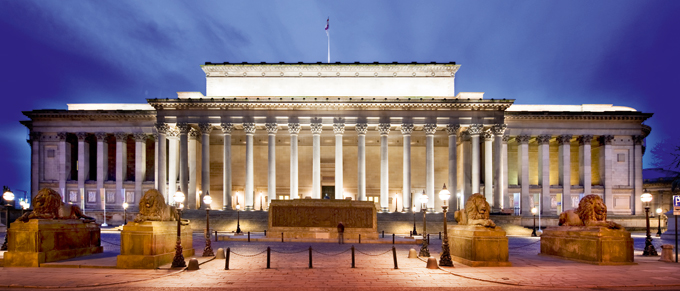
A city so rich in heritage has much to delight architecture enthusiasts and history buffs alike – for Liverpool has more listed buildings than anywhere outside the capital. The grandeur of the dockside and the imposing museums on William Brown Street are hard to miss, but less obvious gems include Liverpool Town Hall and St George’s Hall, described by Prince Charles as the finest example of neo-classical architecture in the country.
For many people, Liverpool is The Beatles, and this year is certainly one of the best for fans to make a pilgrimage as the city is celebrating 50 years of the Fab Four in 2012. It was in January 1962 that Brian Epstein was appointed manager, May that they signed to Parlophone, and June of the same year that The Beatles laid down their first tracks with George Martin in the Abbey Road studios. Quite the momentous year. This year’s International Beatles Week (held every November) promises to be the biggest yet.
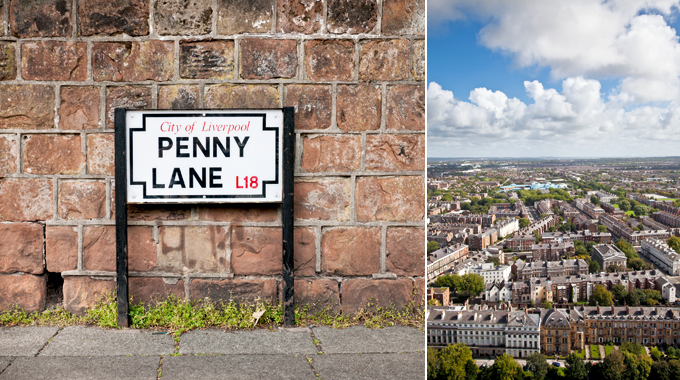
Beatles fans will want to take in all the best-known sights, from the lyrical highlights of Penny Lane, to Mendips, John Lennon’s house, or Paul McCartney’s home just around the corner. The National Trust run the most reliable tours and will get you inside the rock legends’ childhood homes. There is also The Beatles Story on Albert Dock, and of course devotees will want to visit The Cavern on Mathew Street and even stay in the Hard Day’s Night hotel.
Less well known is Liverpool’s wonderful variety of green spaces. Sefton Park is a 200-acre park with a lovely Victorian palm house at its centre, while across the Mersey is Birkenhead Park, which was Britain’s first public park and the model for New York’s Central Park. Further afield is the National Wildflower Centre in Knowsley and the Hilbre Island Nature reserve, which is perfect for spotting seals and marine wildlife. On nearby Crosby Beach, wanderers along the sand will come across Another Place by Antony Gormley, a huge installation of a hundred cast-iron statues gazing wistfully out to sea.
And what could sum up Liverpool more perfectly? Ambitious, artistic, a moment of unexpected brilliance, and with the sea always lapping at its feet.
| Related articlesPlaces to visit in Liverpool The Mighty Fells: Britain’s highest peaks Liverpool: an insider’s guide A jaunt into Jane Austen country |






 © 2024
© 2024